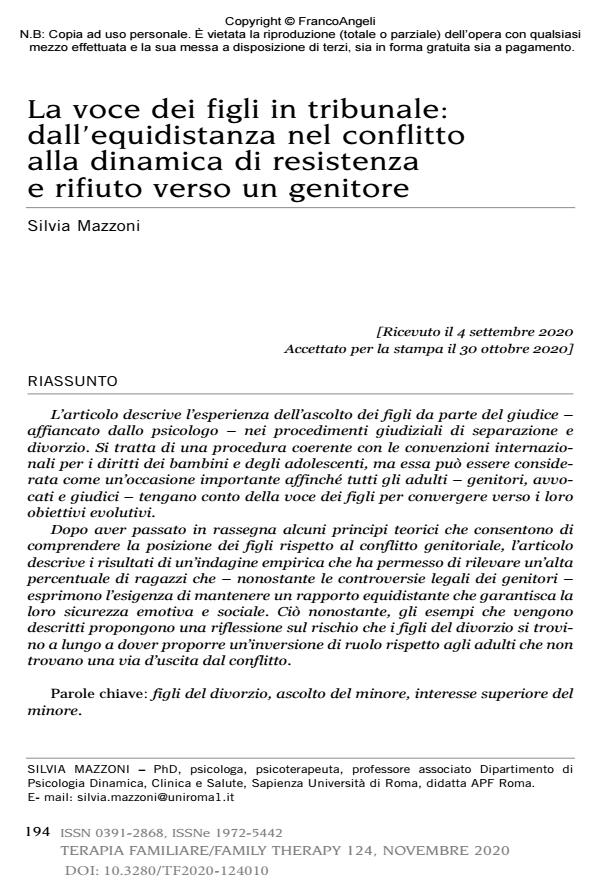The voice of the children in court: from equidistance to resist/refuse dynamic in the parental conflict
Journal title TERAPIA FAMILIARE
Author/s Silvia Mazzoni
Publishing Year 2021 Issue 2020/124
Language Italian Pages 23 P. 194-216 File size 132 KB
DOI 10.3280/TF2020-124010
DOI is like a bar code for intellectual property: to have more infomation
click here
Below, you can see the article first page
If you want to buy this article in PDF format, you can do it, following the instructions to buy download credits

FrancoAngeli is member of Publishers International Linking Association, Inc (PILA), a not-for-profit association which run the CrossRef service enabling links to and from online scholarly content.
The article describes the experience of listening to children by the Judge - together with the Psychologist - in the judicial proceedings of separation and divorce. It is a procedure consistent with international conventions for the rights of children and adolescents, but it can be considered as an important opportunity for all adults - parents, lawyers and judges - to take into account the voice of children and to converge towards their developmental goals. After reviewing some theoretical principles that make it possible to understand the position of children with respect to parental conflict, the article describes the results of an empirical survey that allowed to detect a high percentage of children who - despite parents’ legal disputes - express the need to maintain an equidistant relationship that guarantees their emotional and social security. Nevertheless, the examples that are described offer a reflection on the risk that the children of divorce find themselves having to propose a role reversal for a long time with respect to adults who do not find a way out of the conflict.
Keywords: Children of divorce, listening to the minor, the best interests of the child.
Silvia Mazzoni, La voce dei figli in tribunale: dall’equidistanza nel conflitto alla dinamica di resistenza e rifiuto verso un genitore in "TERAPIA FAMILIARE" 124/2020, pp 194-216, DOI: 10.3280/TF2020-124010